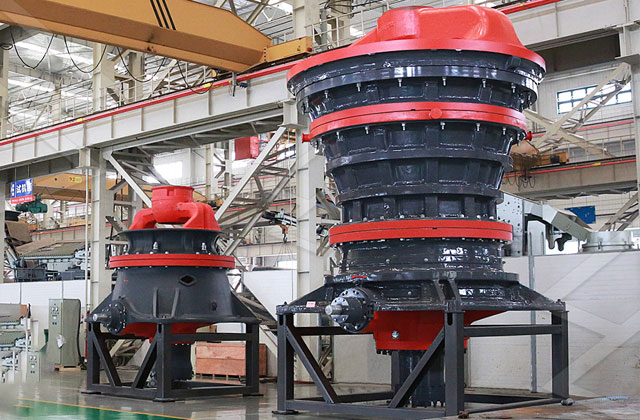A gyratory crusher and a cone crusher are two types of rock crushing equipment commonly used in the mining, construction, and quarrying industries. Although they have similarities, they have significant differences that make them unique. In this article, we’ll discuss the differences between the two types of crushers.
What is a Gyratory Crusher?
A gyratory crusher is a type of rock crusher that uses a mantle to crush rocks. The mantle is located inside the gyratory head, which is supported by a series of springs or hydraulic cylinders. As the mantle moves, it crushes the rocks against the concave wall of the crushing chamber. Gyratory crushers are used for primary crushing of rocks and ores.

What is a Cone Crusher?
A cone crusher is another type of rock crusher that works by squeezing rocks between two surfaces. The surfaces, called the mantle and the concave, move towards and away from each other to crush the rocks. The cone crusher is used for secondary and tertiary crushing of rocks and ores.

Differences between Gyratory Crusher and Cone Crusher
Crushing Principle
The crushing principle of a gyratory crusher is different from that of a cone crusher. A gyratory crusher uses a mantle that gyrates, or rotates, within a concave bowl. As the mantle moves, it crushes the material against the concave. In contrast, a cone crusher uses an eccentrically rotating spindle to crush rocks between a mantle and a concave.
Size Reduction Ratio
The size reduction ratio of a gyratory crusher is much higher than that of a cone crusher. This is because a gyratory crusher can handle larger rocks than a cone crusher. Additionally, the gyratory crusher has a larger feed opening that can handle coarser feed material.
Operation
The operation of a gyratory crusher is similar to that of a cone crusher. However, gyratory crushers are typically operated at a lower speed than cone crushers. This means that the gyratory crusher produces less dust, noise, and vibration during operation.
Maintenance
Gyratory crushers are more difficult to maintain than cone crushers. This is because the main shaft of a gyratory crusher is located at a greater depth than the head of a cone crusher. Additionally, the gyratory crusher requires more maintenance than the cone crusher because of its larger size and complexity.
Capacity
Gyratory crushers have a higher capacity than cone crushers. This is because the gyratory crusher can handle larger feed sizes and produce larger output sizes than the cone crusher.
Cost
Gyratory crushers are more expensive than cone crushers. This is because they require more materials to be built and are more complex in design. Additionally, the operating and maintenance costs of a gyratory crusher are higher than those of a cone crusher.
Both gyratory crushers and cone crushers are used for rock crushing in the mining, construction, and quarrying industries. However, they have significant differences in terms of crushing principle, size reduction ratio, operation, maintenance, capacity, and cost. The choice between a gyratory crusher and a cone crusher depends on the specific requirements of the application and the cost-benefit analysis of each option.
